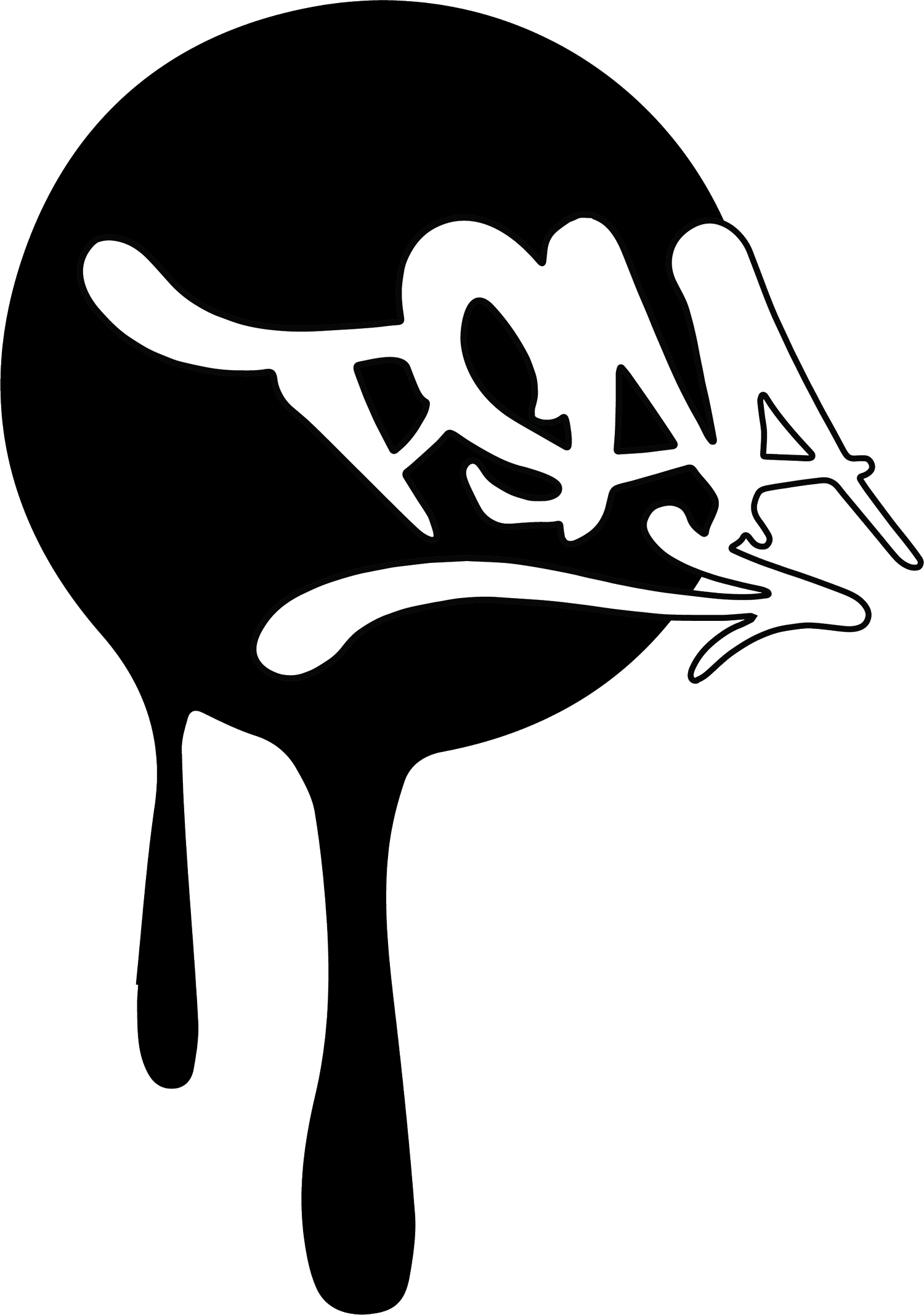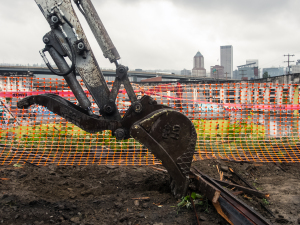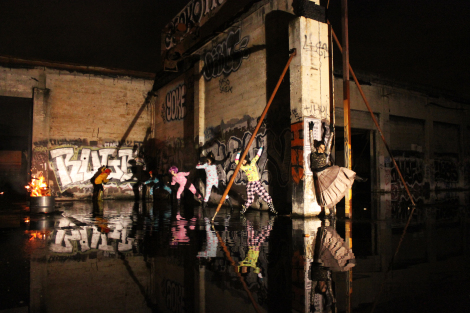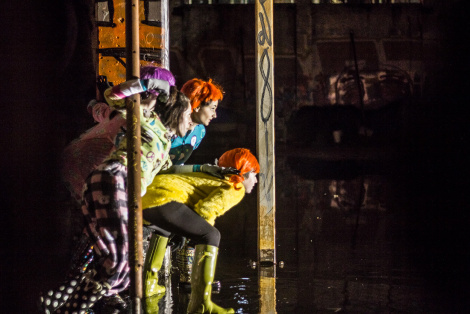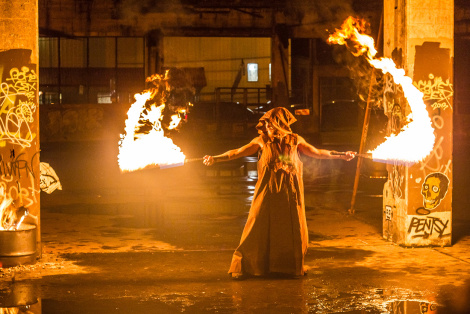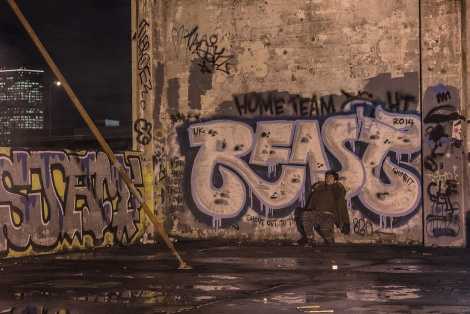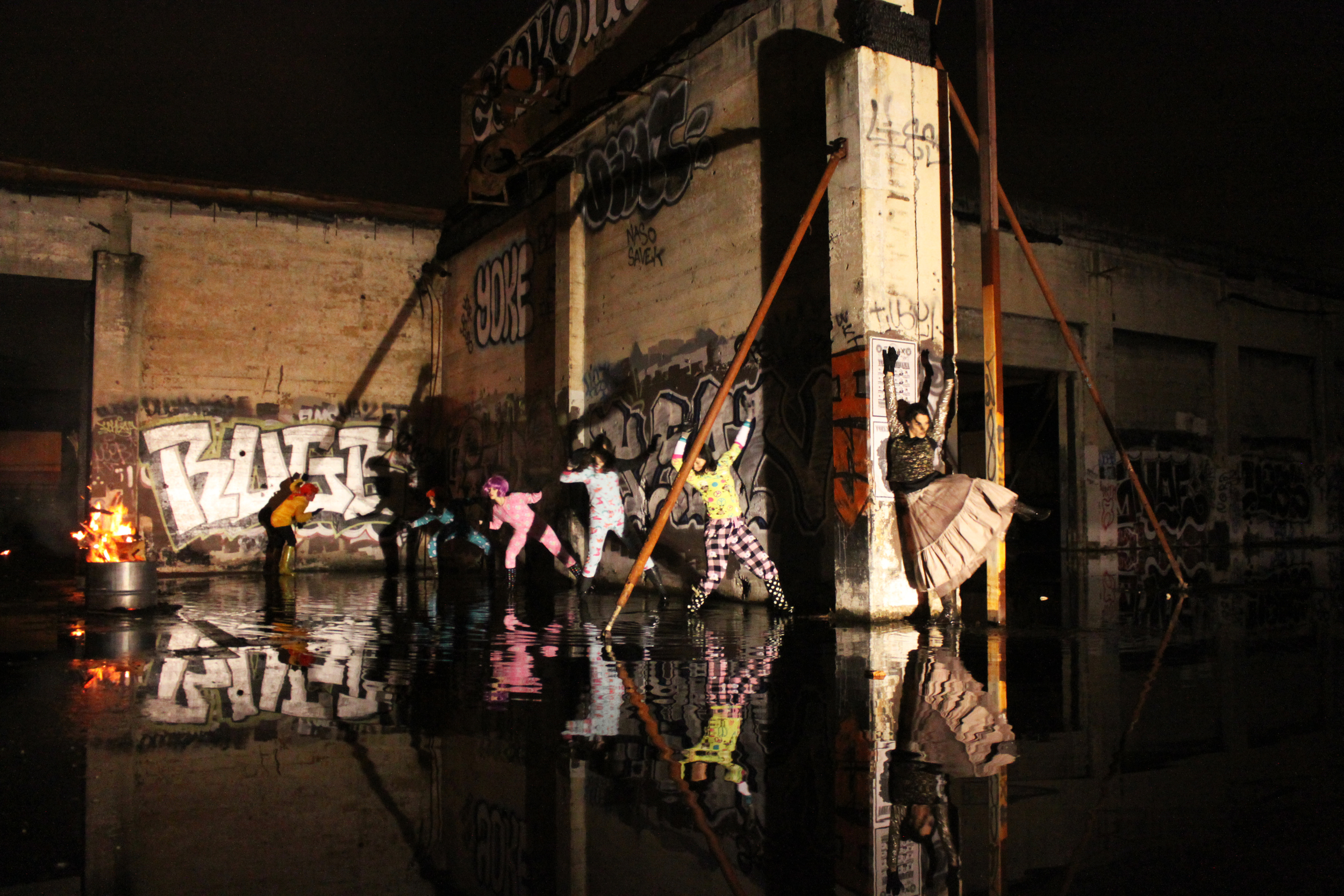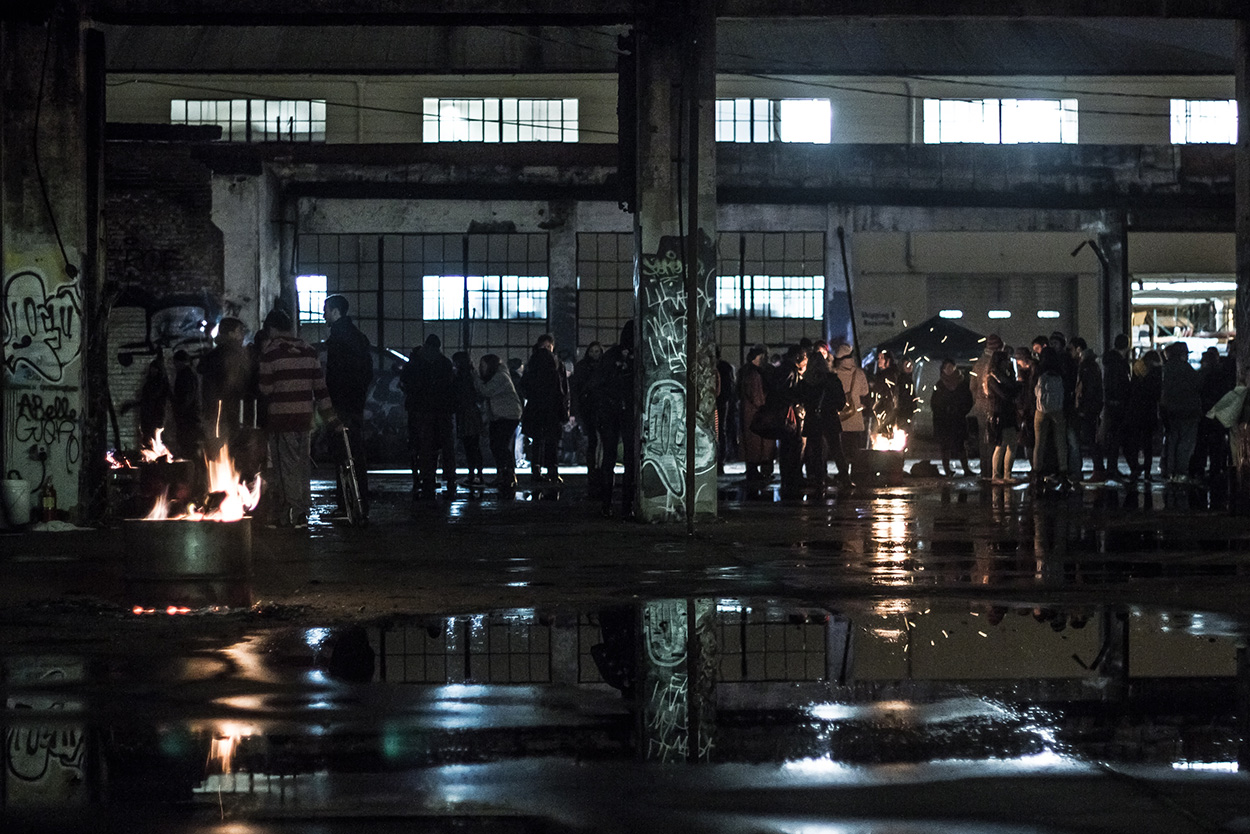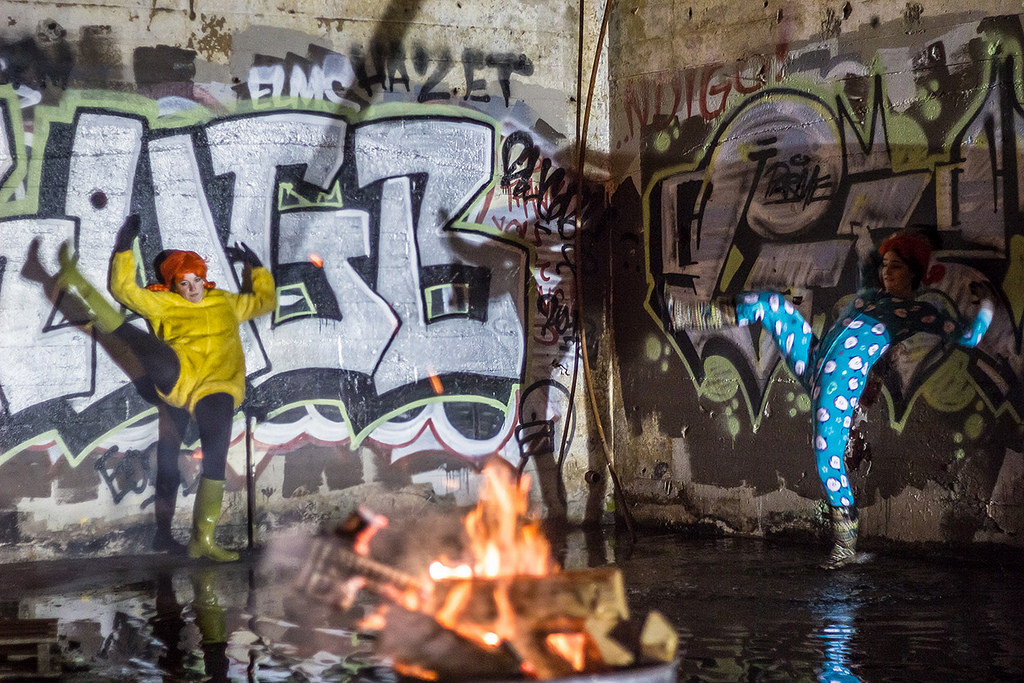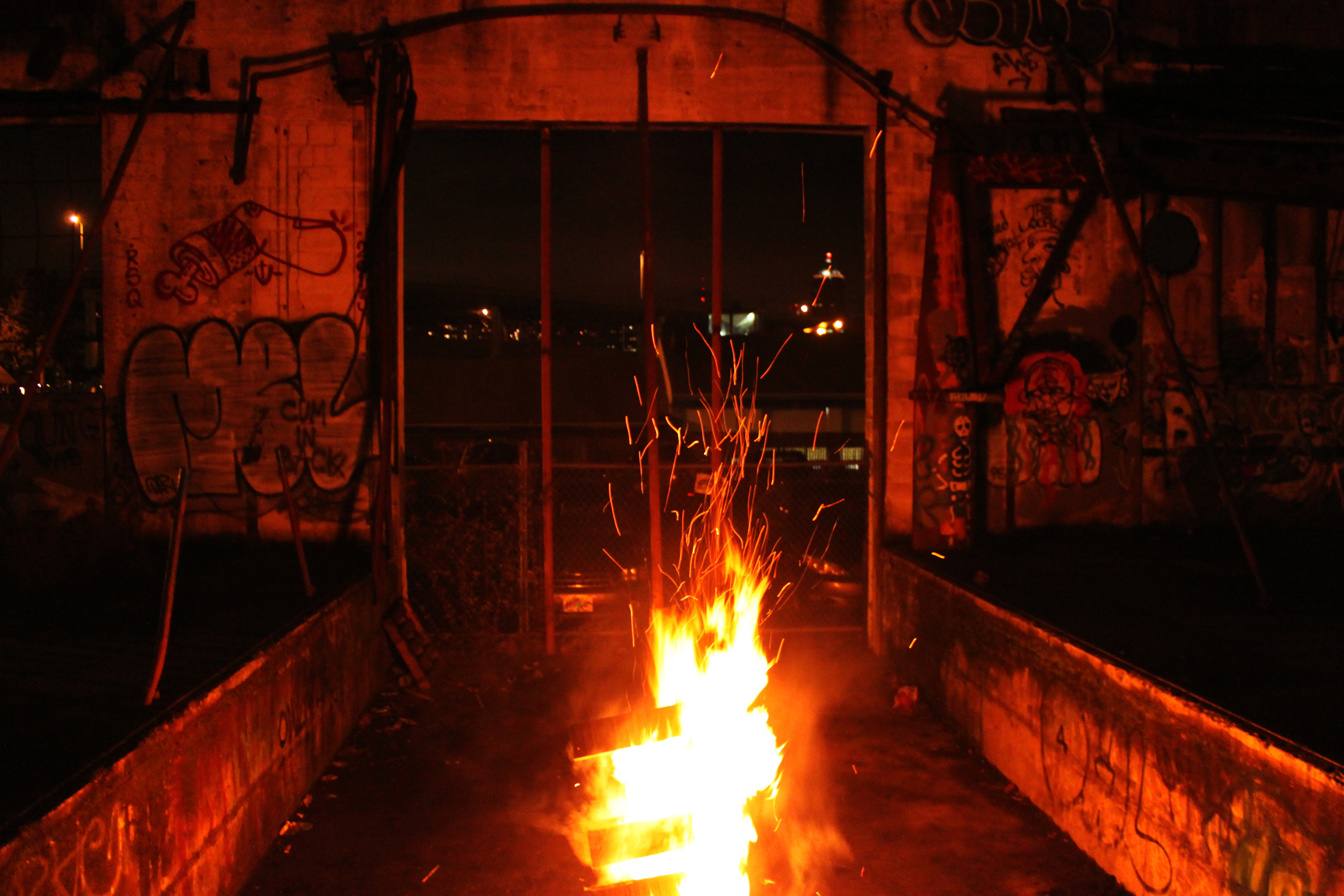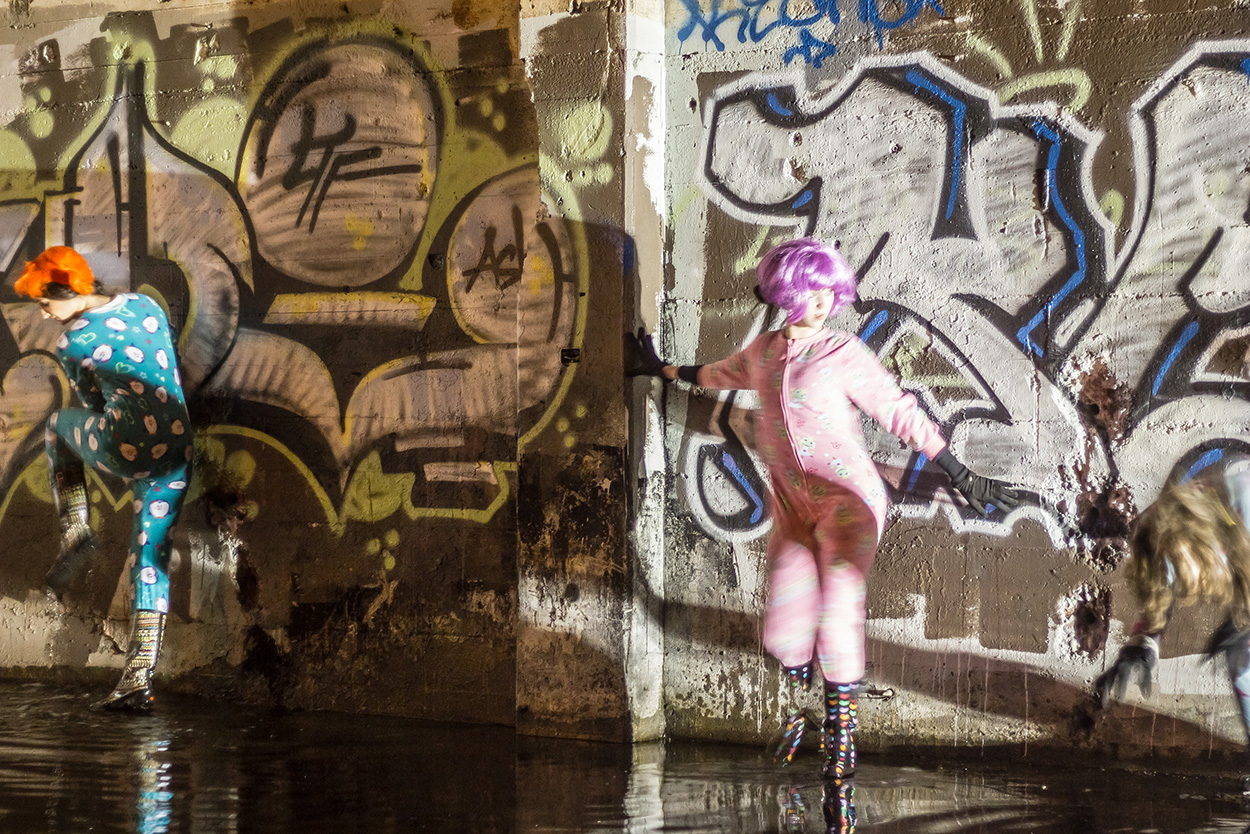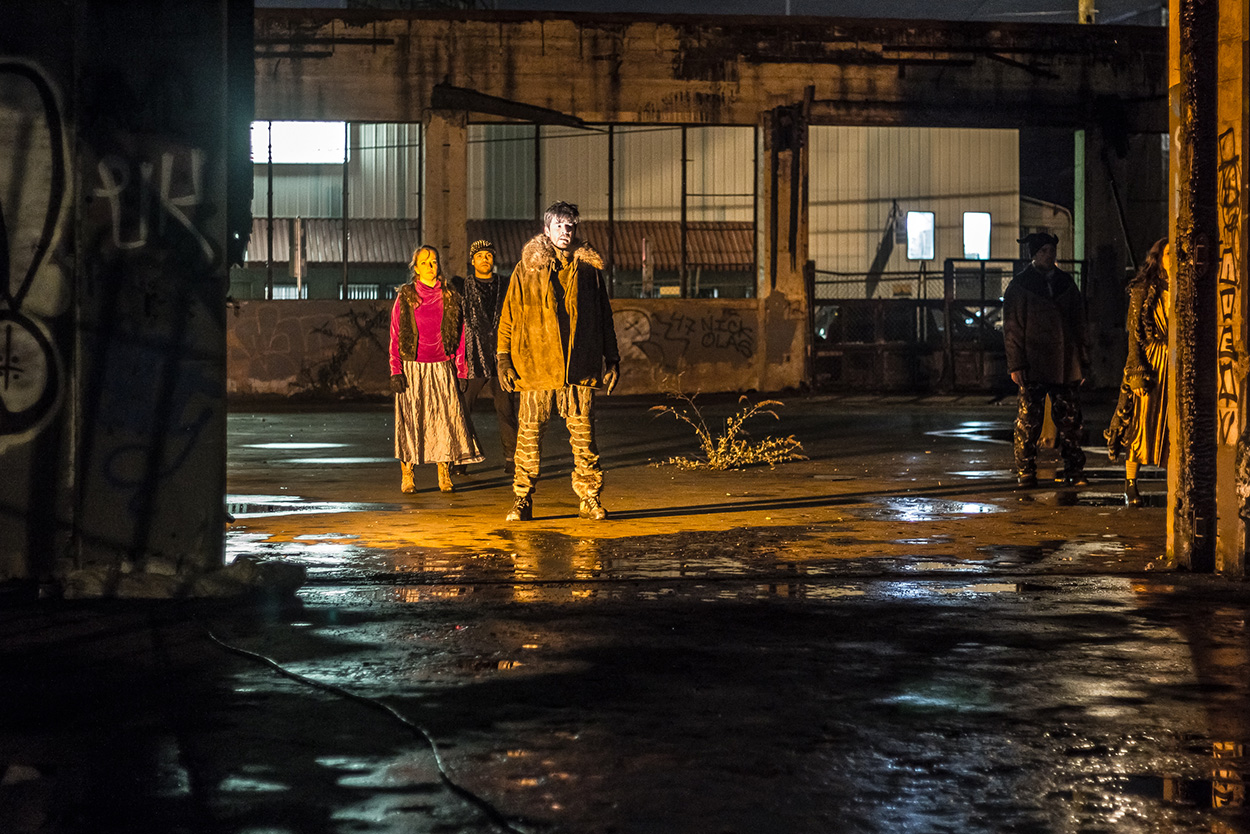Since 2006, the remains of the Taylor Electric building have been a unique Portland landmark. A sanctuary for artists, rebels, and outcasts. Over these nine years, this burnt out industrial skeleton at SE 2nd and Clay had been continuously and illegally reinvented by the public into a gallery for urban art and exploring. Taylor Electric was full of possibilities, a homemade refuge, and a cultural space of our own making.
The aesthetics of Taylor Electric were addictive for many, not only artists and tourists, but academics, journalists, photographers, and videographers. As geographer Bradley Garrett wrote “these spaces are appreciated for their aesthetic qualities, for their possibilities for temporarily escaping the rush of the surrounding urban environment and their ability to hint at what the future might look like, when all people have disappeared, a visceral reminder of our own mortality.”
In the months leading up to its demise, the art in Taylor Electric flourished as the fences went down and security was reduced. More so than ever people of all types, young and old, high heels and rubber boots, descended on this public place to experience an post-apocalyptic scene bursting with color.
Rumors of demolition and development plans had been circulating for years. With Portland’s economy and population is booming this change was inevitable. As power and urban space collide, developers moved their attention to this centrally located urban property. It was a profitable time to rebuild. This time instead of an electrical supply company, this site would be occupied by an office building and café. Part of the existing south-facing retaining wall of the 1936 building will be preserved and incorporated into the new structure.
In early May 2015, a large fence was erected, surrounding the entire building and closing an adjacent street. On Monday May 10th the demolition of Taylor Electric began. Spreading quickly through social media, artists shared images of the first walls to fall. Some onlookers talked with workers, gathering details of the plans. Local media outlets, like the Willamette Week covered the story, focusing on the cultural importance and impact of this space.
While a sense of loss pervaded, there was also a sense of unity and reflection that arose, as many people began to introspectively think about what was being lost, but also what had been built over the years in this space.
A local group of artists created this video:
Taylor Electric was showcase of local, regional, national and international graffiti art. When people visited Portland and wanted to see graffiti, Taylor Electric was the obvious and easiest destination.
While it has been difficult to see Portland’s only truly public and easily accessible graffiti space crumble before our eyes, graffiti is about temporarily occupying and re-imagining the spaces of the city. This spark that creates culturally rich places like Taylor Electric, lives within us. We use these urban voids as conduits and staging grounds for our creative energies. Taylor Electric was a particularly conductive environment for such electricity, but there are always new frontiers. That’s part of the beauty of graffiti; it’s always searching out the unexplored and raw. Strangely, it’s ephemeral and nomadic nature contributes to its resiliency and allure. Because it won’t be there forever.
All images © 2015 Anton Legoo
LAST DANCE WITH TAYLOR ELECTRIC
“If I can’t dance, I don’t want to be part of your revolution – Emma Goldman 1931”
Last night, from a ruined crack of the urban landscape, culture erupted with fiery explosions of color, light, and movement. Crowds gathered inside and outside the space to watch this mysterious event. Playing amongst these ruins, using rubble as the raw material for innovation, the Heidi Duckler Dance Theatre Northwest’stook over Taylor Electric, using it as a stage for Ragnarok, a Norse mythological tale of destruction and rebirth. The dance performance featured artists from Portland State University, Seattle, Los Angeles and San Francisco.
This event is the first and perhaps the last opportunity for the public to officially experience this space, before it is lost forever. Demolition plans have been set.
Since the ruins of Taylor Electric were left to stand outside the political economy of urban development for years, it has functioned as richly occupied public space.While it was not legally public, it also was not subjected to the exclusionary controls of commercialization that increasingly afflict our cities. Taylor Electric offered a ‘shelter from the storm’ for a diverse community of outcasts, illustrating why debates over urban economic and cultural gentrification often evolve into debates over social well-being, social order, and social justice.
Many officials and developers envision streets purged of marginalized populations, cleared of human trash. These uncomfortable reminders of decay and neglect counter a narrative of a city made safe for endless effortless consumption and full of programmed urban activities. Officials often present redevelopment as economic salvation, or as social and cultural stimulation – restoring their version of a ‘quality of life.’
However, for many people in the city, spaces like this are essential for quality of life. We choose to live in the city for the unexpected and the grit. In this way, we view the demolition of Taylor Electric as the destruction of our public and cultural sphere. In many modern sanitized cities, space for unanticipated interaction and chaotic urban pleasures are rapidly diminishing.
Over the past few weeks, as the fences have been slowly removed, the amount and variety of urban explorers descending upon the space has dramatically increased. People of all types come to take photos, reminisce, and talk with each other about what the place is and its future. Experiencing the dance performance shed light on how easy it would have been to use a space like this for community events. Imagine if grass were planted in the factory floor, turning the space into a unique pocket park surrounded by the burnt-out skeleton walls. Live bands could play music, people could have picnics, street artists could paint murals, and mobile food carts could provide food and beverages. As many from the street art community have argued for years, if permitted, this would have provided a perfect free wall space, something the city does not have and desperately needs. Portland has a ‘zero-tolerance’ graffiti policy requiring that all un-permitted public expression be promptly removed or the property owner will be fined. Countless northwest cities (Seattle, Tacoma, Olympia, San Francisco, etc.) have free walls that are open to public expression. Free walls are a community asset because they provide a designated safe place for people to practice and refine their artistic skills and a place where urban flâneurs and tourists can go to see this style of art.
Our vision of the City of Portland is a place where gutter punks, graffiti writers, and the houseless community will no longer be driven from public space. They’ll be embraced as members of the community. In such a city, residents would no longer be taught to fear marginal spaces like Taylor Electric, they would be embraced for creativity and cultural innovation, where the inherent uncertainty of the unpredictable provides raw material and conditions that incubate new ways of being and thinking. The allure of this vision is undoubtedly fleeting. We must not forget this spark lives within us, not necessarily in the spaces we create and occupy. We use these urban voids as conduits and staging grounds for creative energy. From the ruins of the past, time and time again, we rebuild.
Special thanks to Hart Noecker and Anton Legoo for contributing to this article.
Some material adapted from Jeff Ferrell’s 2001 book, “Tearing down the Streets: Adventures in Urban Anarchy”
All images © 2014 Anton Legoo
TAYLOR ELECTRIC FREE SPACE
Seven years ago, a massive fire engulfed the wooden frame Taylor Electric Supply Warehouse on SE 2nd & Clay in the Central Eastside Industrial District of Portland. The building housed electrical equipment, flammable materials and chemicals. It was one of Portland‘s largest industrial fires ever. It burnt into the night, causing power outages and oil spills in the Willamette River. The next day, the smoldering building collapsed. All that remained was a charred skeleton and an ash-covered floor.
Today, the building‘s shell stands mostly unchanged, but with one important difference. It serves as a public art gallery, a mecca for Portland’s street art and photography community. Here, emerging and veteran artists showcase their art to the public; free, direct, and uncensored. On most days, visitors discover a range of graffiti here including, tags, stencils, installations, and huge masterpieces. As with many official and unofficial ‘free walls,’ the graffiti in Taylor Electric is generally found to be more aesthetic pleasing. The artists have time to create more detailed work.
During the day, the building comes alive in other ways. On the edge of Produce Row, a flurry of manufacturing and shipping activity surrounds it. Professional photographers, film crews, wedding parties, and urban explorers descend upon the building to photograph its walls. It is even used to market locally-made mustard.
Even though graffiti is often stereotyped negatively as promoting blight and urban decay, a thriving street art scene is also a sign of a vibrant, innovative, and creative city. Under-use and decay of built environments is not caused by the presence of graffiti; it is instead a by-product of an area that’s already in disrepair. Artists are drawn to these spaces because of their gritty aesthetics and the anonymity they provide.
Cities like Berlin, London, Melbourne, Basel, and Miami have realized that fostering creative activities in public (both planned and unplanned) can be beneficial to the city, financially and culturally. In many cities around the world, graffiti removal is mostly targeted to the central downtown core. The extent of graffiti abatement outside the city is left to individual neighborhoods to decide and manage. Some neighborhoods are mostly free of graffiti, and other areas the walls burst with color. This is not the case in the City Portland, where a blanket zero-tolerance policy covers the entire city. It is illegal to paint graffiti (or a mural) on an outside wall, even if you have permission from a property owner. If graffiti is not covered up in 10 days, property owners run the risk of being issued substantial fines from the city. Additionally, Portland does not host any official free walls, like other northwest cities, like Tacoma and Olympia do. What often results in Portland is an abundance of quick tags (which most people dislike) all over the city, instead of more elaborate pieces painted on designated walls or districts.
Portland’s zero-tolerance policy has been playing out on the walls of Taylor Electric for years now. The entire building has been ‘buffed’ (painted-out) every few months to remove the graffiti even though it was an un-salvageable building with no residential neighbors. The premise behind this continued effort was that it would “reduce social deterioration within the City and promote public safety and health.” The assumption is that consistently covered up graffiti will deter more from occurring. Research done by Portland State University graduate students in 2004 and 2012 (Gorsek & Conklin, respectively), suggests that, in fact, buffing does not to deter graffiti from reoccurring. If anything, the solid paint provides a fresh canvas to work on and incentive to get bigger and better.
The potential for re-development of the Taylor Electric site, and the surrounding area, cannot be denied. It sits just minutes from downtown Portland, offers panoramic city views of the city, and easy access to the Willamette River, East Bank Esplanade, and Hawthorne Bridge. Down the road, you find Distillery Row, the heart of Portland’s craft distilling movement, several of Portland’s famous food cart pods, the Museum of Science and Industry, and most recently, the new Eastside Streetcar line.
A different type of gentrification is occurring in the Central Eastside Industrial District (CEID). It is zoned industrial, not residential. Some of the businesses in this district have operated here for decades. There is even a non-profit, volunteerorganization, responsible for representing businesses and property owners in the Central Eastside Industrial District. This group fights to protect the rights of property owners and businesses in the district and keep CEID as an ‘industrial sanctuary,’ and major employment zone for the city.
Just recently it was announced that the Taylor Electric Building had been sold. It is now slated to be re-developed into office space. New building plans can be found here. This re-development was inevitable. Portland’s and urban growth boundary makes it a very dense city. Most vacant land in and around the urban core is developed. This land-use planning protects our cherished natural surroundings, fosters walkable, bikeable, cohesive, and vibrant neighborhoods.
However, this density also makes finding hidden under-used spaces that allow for alternative uses very hard to find. Undeveloped landscapes serve as a reminder that there is value in not having all urban space in continuous official use. These spaces in-between are voids that allow for unscripted activities. In Portland, out of under-used parking lots, culinary meeting grounds arise. In a trash covered ditch under a bridge, one of the most famous skateboarding spots in the world, Burnside Skatepark, was built by hand and without permission.
Although many people might at first think these spaces as uninviting, boring and even dangerous, other people see great potential in these derelict wastelands. These spaces offer respite from the city‘s watchful eyes. They are places in a state of uncertainty, caught between uses, and open to endless possibilities.
